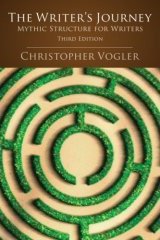JohnnyNeutron
New Member
The One-Page Novel Plot Outline by Derek Murphy (https://www.creativindie.com/wp-content/uploads/2018/10/plot-outline.pdf) looks like an excellent tool for a plot & structure-nooby-wannabe-writer-type-person like myself. But there is something I’m confused by. Doc Murphy breaks his outline template into 25 key chapters, but he places the eight main plot-points as bullets between the numbered key chapters. For instance,
6) Pull Out Rug
# ACT II: 1st PLOT POINT (Point of No Return)
7) Enemies & Allies
So, where does the 1st Plot-Point scene go? Should it be the last scene in Chapter 6 Pull Out Rug at the end of ACT 1, or is it the first scene in Chapter 7 Enemies & Allies at the beginning of ACT 2? (I am aware that there’ll probably be many more than 25 chapters in my book, I know the Doc is using these 25 as key story chapters, not the only chapters)
Everything I’ve read, thus far, makes it clear that the 1st Plot-Point scene should be the last scene in ACT 1, but Doc Murphy seems to suggest that it belongs as the first scene in ACT 2.
I have the same question regarding the other seven main plot points as well.
I’m probably splitting hairs here, but I’m kind of a stickler for details. If my question is annoying, just let me know, I’m old and have rhino-hide thick skin. Peace.
– The Freshman JohnnyNeutron
6) Pull Out Rug
# ACT II: 1st PLOT POINT (Point of No Return)
7) Enemies & Allies
So, where does the 1st Plot-Point scene go? Should it be the last scene in Chapter 6 Pull Out Rug at the end of ACT 1, or is it the first scene in Chapter 7 Enemies & Allies at the beginning of ACT 2? (I am aware that there’ll probably be many more than 25 chapters in my book, I know the Doc is using these 25 as key story chapters, not the only chapters)
Everything I’ve read, thus far, makes it clear that the 1st Plot-Point scene should be the last scene in ACT 1, but Doc Murphy seems to suggest that it belongs as the first scene in ACT 2.
I have the same question regarding the other seven main plot points as well.
I’m probably splitting hairs here, but I’m kind of a stickler for details. If my question is annoying, just let me know, I’m old and have rhino-hide thick skin. Peace.
– The Freshman JohnnyNeutron


